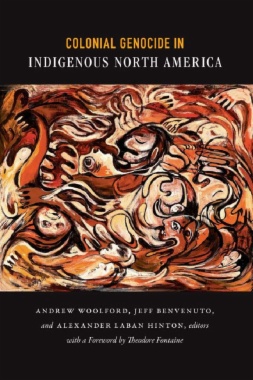This important collection of essays expands the geographic, demographic, and analytic scope of the term genocide to encompass the effects of colonialism and settler colonialism in North America. Colonists made multiple and interconnected attempts to destroy Indigenous peoples as groups. The contributors examine these efforts through the lens of genocide. Considering some of the most destructive aspects of the colonization and subsequent settlement of North America, several essays address Indigenous boarding school systems imposed by both the Canadian and U.S. governments in attempts to "civilize" or "assimilate" Indigenous children. Contributors examine some of the most egregious assaults on Indigenous peoples and the natural environment, including massacres, land appropriation, the spread of disease, the near-extinction of the buffalo, and forced political restructuring of Indigenous communities. Assessing the record of these appalling events, the contributors maintain that North Americans must reckon with colonial and settler colonial attempts to annihilate Indigenous peoples.
Contributors. Jeff Benvenuto, Robbie Ethridge, Theodore Fontaine, Joseph P. Gone, Alexander Laban Hinton, Tasha Hubbard, Margaret D. Jabobs, Kiera L. Ladner, Tricia E. Logan, David B. MacDonald, Benjamin Madley, Jeremy Patzer, Julia Peristerakis, Christopher Powell, Colin Samson, Gray H. Whaley, Andrew Woolford
- Contents
- Foreword - Theodore Fontaine
- 1. Introduction: Colonial Genocide in Indigenous North America - Jeff Benvenuto, Andrew Woolford, and Alexander Laban Hinton
- Part I. Intersections and Trajectories
- Chapter 1. Discipline, Territory, and the Colonial Mesh: Indigenous Boarding Schools in the United States and Canada - Andrew Woolford
- Chapter 2. Global Capital, Violence, and the Making of a Colonial Shatter Zone - Robbie Ethridge
- Chapter 3. Genocide in Canada: A Relational View - Christopher Powell and Julia Peristerakis
- Part II. Erasure and Legibility
- Chapter 4. California and Oregon’s Modoc Indians: How Indigenous Resistance Camouflages Genocide in Colonial Histories - Benjamin Madley
- Chapter 5. American Folk Imperialism and Native Genocide in Southwest Oregon, 1851–1859 - Gray H. Whaley
- Chapter 6. Memory, Erasure, and National Myth - Tricia E. Logan
- Chapter 7. Residential School Harm and Colonial Dispossession: What’s the Connection? - Jeremy Patzer
- Part III. Transformations
- Chapter 8. The Habit of Elimination: Indigenous Child Removal in Settler Colonial Nations in the Twentieth Century - Margaret D. Jacobs
- Chapter 9. Revisiting Choctaw Ethnocide and Ethnogenesis: The Creative Destruction of Colonial Genocide - Jeff Benvenuto
- Chapter 10. Political Genocide: Killing Nations through Legislation and Slow-Moving Poison - Kiera L. Ladner
- Chapter 11. Dispossession and Canadian Land Claims: Genocidal Implications of the Innu Nation Land Claim - Colin Samson
- Part IV. (Re)Imaginings
- Chapter 12. Colonial Genocide and Historical Trauma in Native North America: Complicating Contemporary Attributions - Joseph P. Gone
- Chapter 13. Buffalo Genocide in Nineteenth-Century North America: “Kill, Skin, and Sell” - Tasha Hubbard
- Chapter 14. Genocide in the Indian Residential Schools: Canadian History through the Lens of the UN Genocide Convention - David B. MacDonald
- Afterword. Colonial Genocide in Indigenous North America: A View from Critical Genocide Studies - Alexander Laban Hinton
- Contributors
- Index

